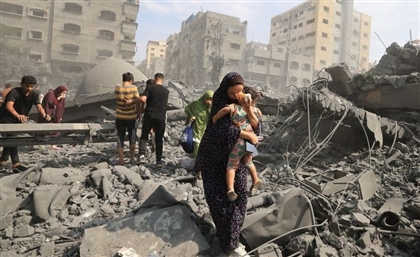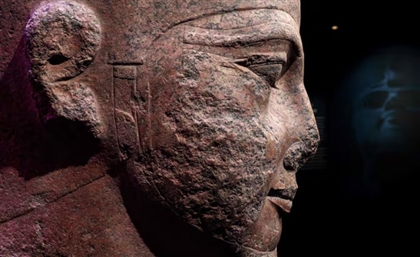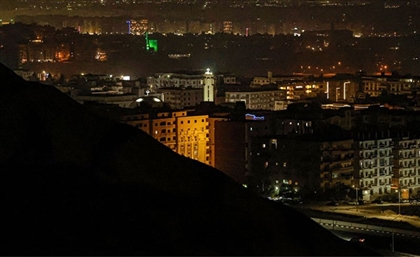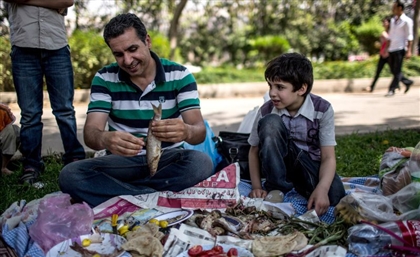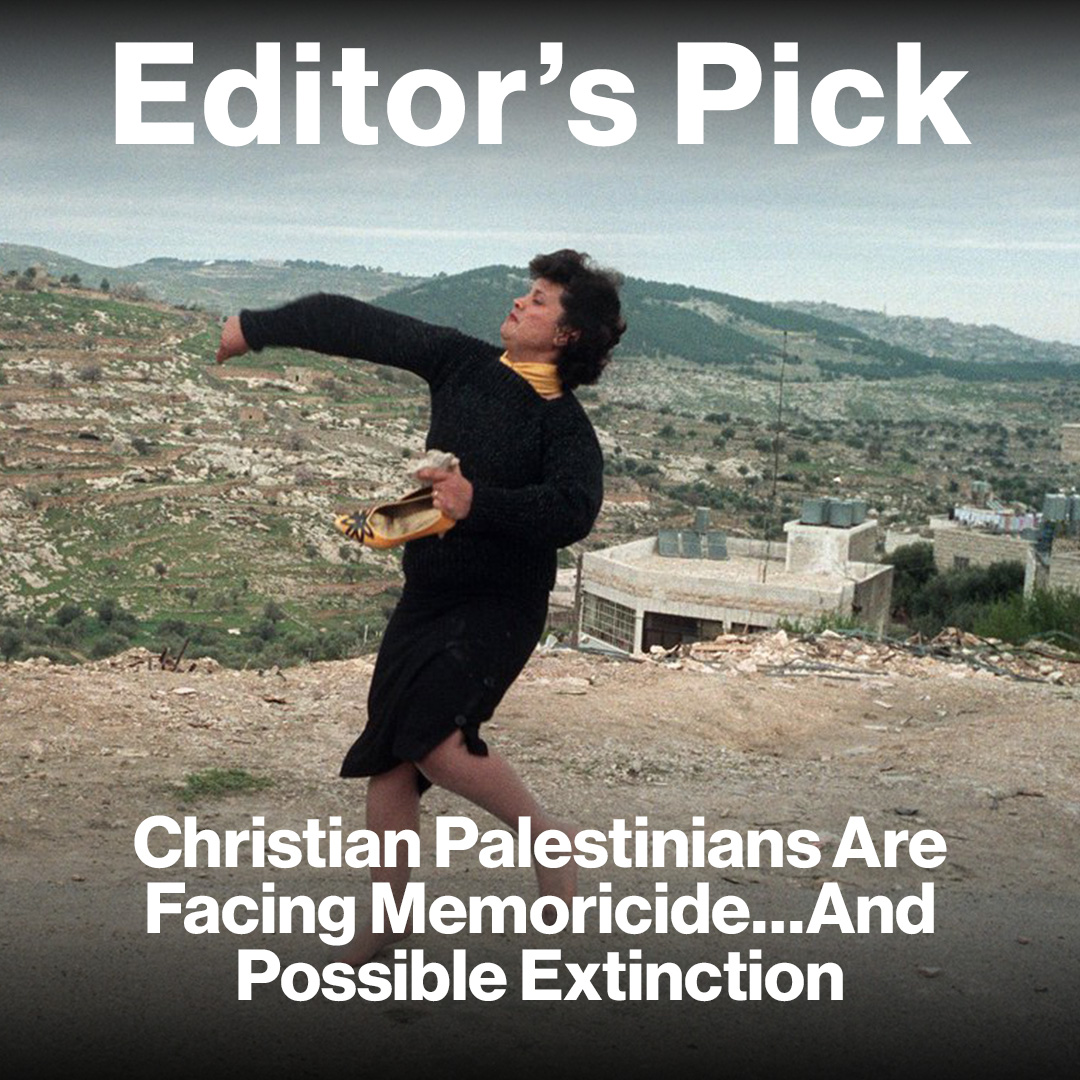Christian Palestinians Are Facing Memoricide…And Possible Extinction
As Palestine’s Christian population dwindles, so too does the hope for its continued existence.
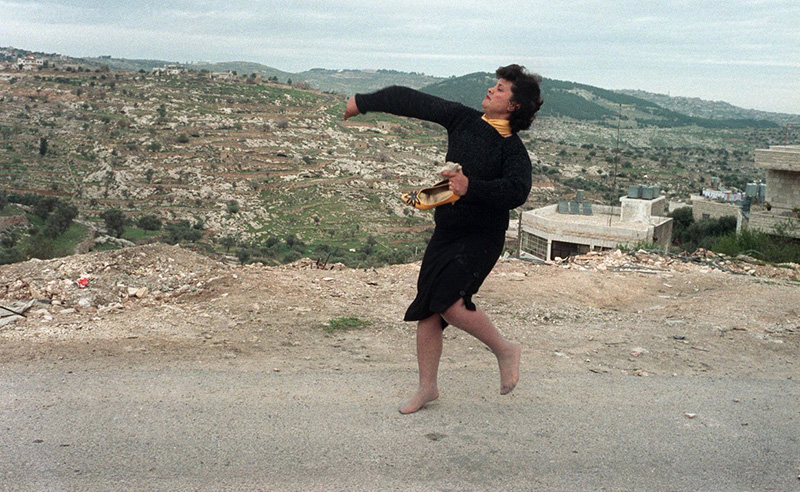
“The roads to [Bethlehem] mourn,
for no one comes to her appointed festivals.
All her gateways are desolate,
her priests groan,
her young women grieve,
and she is in bitter anguish” ~ Lamentations 1:4
It was, in many ways, the perfect demonstration of how ethnic cleansing slowly and consciously unfolds. The destruction of Gaza’s oldest church, the Saint Porphyrius, teaches us something important about genocide: that, to the coloniser, bloodletting is scarcely ever enough. At the culmination of violence, there comes a point when the killing of human lives no longer satiates voracious, colonial greed, and something larger, more symbolic, must happen; in the case of Gaza, it was the bombing of a structure dating back to the early 4th century.
At the culmination of violence, there comes a point when the killing of human lives no longer satiates voracious, colonial greed, and something larger, more symbolic, must happen; in the case of Gaza, it was the bombing of a structure dating back to the early 4th century.
The attack targets, quite evidently, more than just human lives. The question, what impels a military power to commit to the destruction of a thousand-year-old church, has only one satisfactory answer: it serves to punish a protracted history of staunch, unwavering resistance to Zionist occupation. At the core of such an aggression lies the earnest conviction that demoralisation, namely in the form of weeding out a people’s historical ties to their land, is the most lethal weapon against political revolt.
The history of Palestine and Palestinian resistance cannot be set forth, discussed or taken seriously without the mention of Christian Palestinians. Amongst the 700,000 Palestinians who were displaced during the Nakba, an estimated 75,000 of them were Christian. Some fled to neighbouring countries, seeking safety, while others refused to leave. Those who stayed behind were arbitrarily corralled into smaller territories. They left behind jobs, churches, cultural and educational institutions—the edifices of which still remain. Dental clinics, law firms, consulting agencies, courts of justice, travel insurance companies, around-the-corner bakeries, Christian youth centres; the places that once teemed with Palestinian life and livelihood now fall deathly silent in the absence of their lifeblood. That lifeblood has since been replaced by abler, worthier bodies, bodies that—in the fifty, sixty, or seventy years of their occupancies in those very places—never once had to grapple with the cognisance, the glaring fact, that for them to be where they are, someone else must now sleep in an internment camp.
That lifeblood has since been replaced by abler, worthier bodies, bodies that—in the fifty, sixty, or seventy years of their occupancies in those very places—never once had to grapple with the cognisance, the glaring fact, that for them to be where they are, someone else must now sleep in an internment camp.
It is easy to forget that the Gaza Strip—despite what it has become—was not always a concentration camp. Throughout years of Palestinian expulsion from all over their land, hundreds of thousands sought refuge within the confines of that enclave. Today, nearly half the population of Gaza, that is, over one million individuals, trace their origins back to other Palestinian cities. In the 75 years since the Nakba, those refugees and their descendants have built new homes, established communities, and—throughout the entire process— kept their old homes constantly in mind, yearning to one day return.
To most Christian refugees in Gaza, their displacement also meant their separation from their churches and religious institutions. While their assimilation into Gaza’s many churches has largely been fluid, they still lost—in unquantifiable measure—the very fabric of their communities. To this day, Christian Gazans still make efforts to restore connections with their circles on the other side, but even if a dispatch were to be sent to the correct address, nothing guarantees that the name on the letter corresponds to the present-day resident. It’s worth noting that throughout their collective history, the churches of Palestine have been much more than sanctuaries of stone and prayer. When shadows lengthen across the land, they morph into literal refuges, their doors flung wide to embrace hundreds escaping the downpour of missiles and gunfire.
It’s worth noting that throughout their collective history, the churches of Palestine have been much more than sanctuaries of stone and prayer. When shadows lengthen across the land, they morph into literal refuges, their doors flung wide to embrace hundreds escaping the downpour of missiles and gunfire.
For Christians in the West Bank, life is also difficult, although perhaps more tolerable. This, on the whole, should attest to the dire living conditions in Gaza, where to many people, the inability to move freely constitutes their foremost constraint. For many a Christian Gazan, building a family often comes with a painful moral dilemma: to stay in Gaza or to go to the West Bank. The reason this dilemma pertains most especially to Christians is because to Gazan Christians, the West Bank means a bigger, more resourceful Christian community. According to the most recent reports, the average population estimate of Christians in the West Bank ranges anywhere between 45,000 and 65,000 individuals, roughly fifty-two times the size of Gaza’s 800 — 1,500. In each of the West Bank cities of Ramallah and Bethlehem, Christians make up at least a third of the population, compared to Gaza’s 1.5%. Ramallah and Bethlehem are also administered by Christian mayors Hanna Hanania and Issa Kassis, respectively.
But as every Gazan—Christian or otherwise—is fully aware by now, movement between Gaza and the West Bank is made nearly impossible. In effect, the only remaining way to enter or leave the Gaza Strip is to obtain a traveller’s permit on the grounds of “humanitarian or medical attention”, with the possible yet volatile exception of allowing Christians an entry during certain holidays. To obtain the permit, one must first navigate through three separate bureaucracies, namely: Hamas, the Israeli government and the Palestinian Authority. Each authority requires the submission of its own, designated paperwork. After the filing process is finished, one can only hope that all three approve. In an event where they do, which is uncommon, the next step is to travel through a checkpoint called the Erez crossing. The checkpoint is furnished with turnstiles, walk-through metal detectors, and, of course, an IDF presence. Once past the checkpoint and out on the open road, the traveller is met with a series of police roadblocks. Drivers are stopped, questioned, and, if they are Palestinian, often face the possibility of being turned back.
To obtain the permit, one must first navigate through three separate bureaucracies, namely: Hamas, the Israeli government and the Palestinian Authority. Each authority requires the submission of its own, designated paperwork. After the filing process is finished, one can only hope that all three approve. In an event where they do, which is uncommon, the next step is to travel through a checkpoint called the Erez crossing. The checkpoint is furnished with turnstiles, walk-through metal detectors, and, of course, an IDF presence. Once past the checkpoint and out on the open road, the traveller is met with a series of police roadblocks. Drivers are stopped, questioned, and, if they are Palestinian, often face the possibility of being turned back.
The journey is patently dehumanising; what, after all, is in any way human about a population of people being treated like cattle? But to Christians with kin on the other side of the wall, that journey is the price they have to pay if they want to attend their grandchildren’s christenings, their family Christmas dinners, their parents’ funerals.
The Church of the Nativity is Bethlehem’s and, by extension, the West Bank’s oldest and largest church. Underneath the main altar, by way of stairs leading down from the chancels, the Grotto of the Nativity glows mystically. It is the alleged birthplace of Jesus Christ, and—to many Christians the world over—a critical pilgrimage site. Every year on Christmas Eve, crowds gather in the outer courtyard to sing carols. Wedding processionals are held in the interior, with scores of friends and family members in attendance. Art students go on excursions to study the intricate architecture of the basilica, the immense, gilded iconostasis, the framed portraits of the Virgin Mary. Israel’s war has now effectively brought the city—with its long-lived, jubilant spirit—to a chilling standstill, a quietude that is perhaps only comparable to the silence that loomed over Bethlehem in 1987, the year of the first Intifada. By Christmas Eve of that year, it became abundantly clear to everyone in the city that the festivities were far from possible and that the grief was only bound to grow. As history repeats itself, so too does the reminder of imminent danger for Christian Palestinians.
Israel’s war has now effectively brought the city—with its long-lived, jubilant spirit—to a chilling standstill, a quietude that is perhaps only comparable to the silence that loomed over Bethlehem in 1987, the year of the first Intifada. By Christmas Eve of that year, it became abundantly clear to everyone in the city that the festivities were far from possible and that the grief was only bound to grow. As history repeats itself, so too does the reminder of imminent danger for Christian Palestinians.
It should also say something when, to an American citizen living in Brooklyn, New York, a trip to the Church of the Nativity in Bethlehem, Palestine is easier for them than it is for a Christian in the Gaza Strip. The situation is such that a flight across the Atlantic is less complicated, less excruciatingly restricted than what would ideally be a four-hour drive.
The feelings of entrapment and suffocating claustrophobia are ones that every person born and raised in the Gaza Strip sooner or later has to contend with. While Christian Gazans continue to be confined to smaller and smaller circles, their presence will never be undermined. Part of the symbolism in bombing the Saint Porphyrius church is the destruction of a refuge, both emblematic and literal all at once, for all those fleeing the senseless bombardments of the Israeli military. The number of lives that were saved when the church sheltered Gazans from mass shelling is unimaginable. No earthly power will ever take that away. In ‘I Am a Palestinian Christian’, Bethlehem-based pastor Mitri Raheb wrote, “What does ‘freedom in Christ’ mean to people living under occupation and denied basic rights? What does the cross mean to a people constantly crucified and marked by suffering? And what does love for even an enemy mean to a people facing a heavily armed enemy?”
In ‘I Am a Palestinian Christian’, Bethlehem-based pastor Mitri Raheb wrote, “What does ‘freedom in Christ’ mean to people living under occupation and denied basic rights? What does the cross mean to a people constantly crucified and marked by suffering? And what does love for even an enemy mean to a people facing a heavily armed enemy?”
- Previous Article XP News: Saudi’s First Opera House Will Be Built in Diriyah
- Next Article Cairo-Jeddah is the World's Second Busiest Flight Route in 2023




